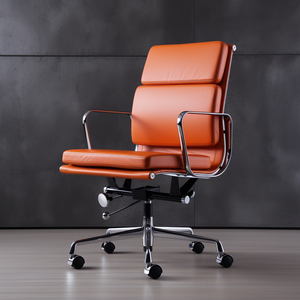Material Matters
The first indicator of a quality chair is the material used. Genuine leather, high-grade mesh, and solid metal components often suggest better durability and comfort. While synthetic fabrics may look appealing, they may not provide the longevity you desire.
Tip: Perform a touch test.
Feel the material. Quality fabrics and materials often feel richer and more robust than their lower-end counterparts.
Ergonomics is Not a Buzzword
A good office chair should offer excellent lumbar support, adjustable armrests, and multiple levers for adjusting height and tilt. An ergonomic design not only increases comfort but also reduces long-term health issues, like back pain and carpal tunnel syndrome.
Tip: Sit before you buy.
If possible, sit in the chair for a few minutes to test its comfort level and ergonomics.
Build Quality
High-end chairs generally have better craftsmanship, including tight stitching, even spacing, and a lack of exposed or frayed materials. Pay attention to the wheels, the base, and any adjustable components. They should move smoothly and withstand stress without wobbling or making noises.
Tip: Perform a weight test.
A quality chair often feels substantial due to its well-built components. Lifting it slightly or rolling it around can give you an idea of its sturdiness.
Brand Recognition
While a recognized brand name is not a surefire guarantee of quality, it often indicates a level of trustworthiness and customer satisfaction. Look for brands known for their durability and customer service.
Tip: Check reviews and testimonials.
A simple online search can provide insights into a chair's quality and durability based on user experiences.
Functionality Over Flash
Some chairs look sophisticated but lack the features that matter. In a quality chair, aesthetics and functionality go hand in hand. Beware of chairs that seem overly ornate but lack essential features like proper back support or adjustable heights.
Tip: Look for functionality features.
Things like a 360-degree swivel, multi-tilt lock, and tension control add to a chair's functionality without compromising on style.
Price Point as a Clue
Though a higher price doesn't always equate to higher quality, extremely low prices often indicate corners have been cut. Trust your instincts and balance the cost with the features offered.
Tip: Consider total cost of ownership.
Quality chairs may require less frequent replacements and could offer better warranties, reducing their long-term cost.
Warranty and Customer Service
Finally, a quality office chair often comes with a robust warranty and excellent customer support. While buying used may limit the warranty options, established brands still provide some level of assurance.
Tip: Inquire about the warranty.
Even in a used condition, some chairs may come with a transferable warranty. Make sure to ask the seller about this. In cases where the warranty is not transferable, looking up the original duration ow warranty can indicate the quality of a product. You can't expect much from a second hand chair, that came brand new with a 1 year manufacturer warranty. A 10 year warranty however is a statement of quality in itself.
By following these guidelines, you can navigate the complexities of the used office furniture market and find a chair that not only meets but exceeds your expectations. Quality is out there; you just need to know what to look for.

























































